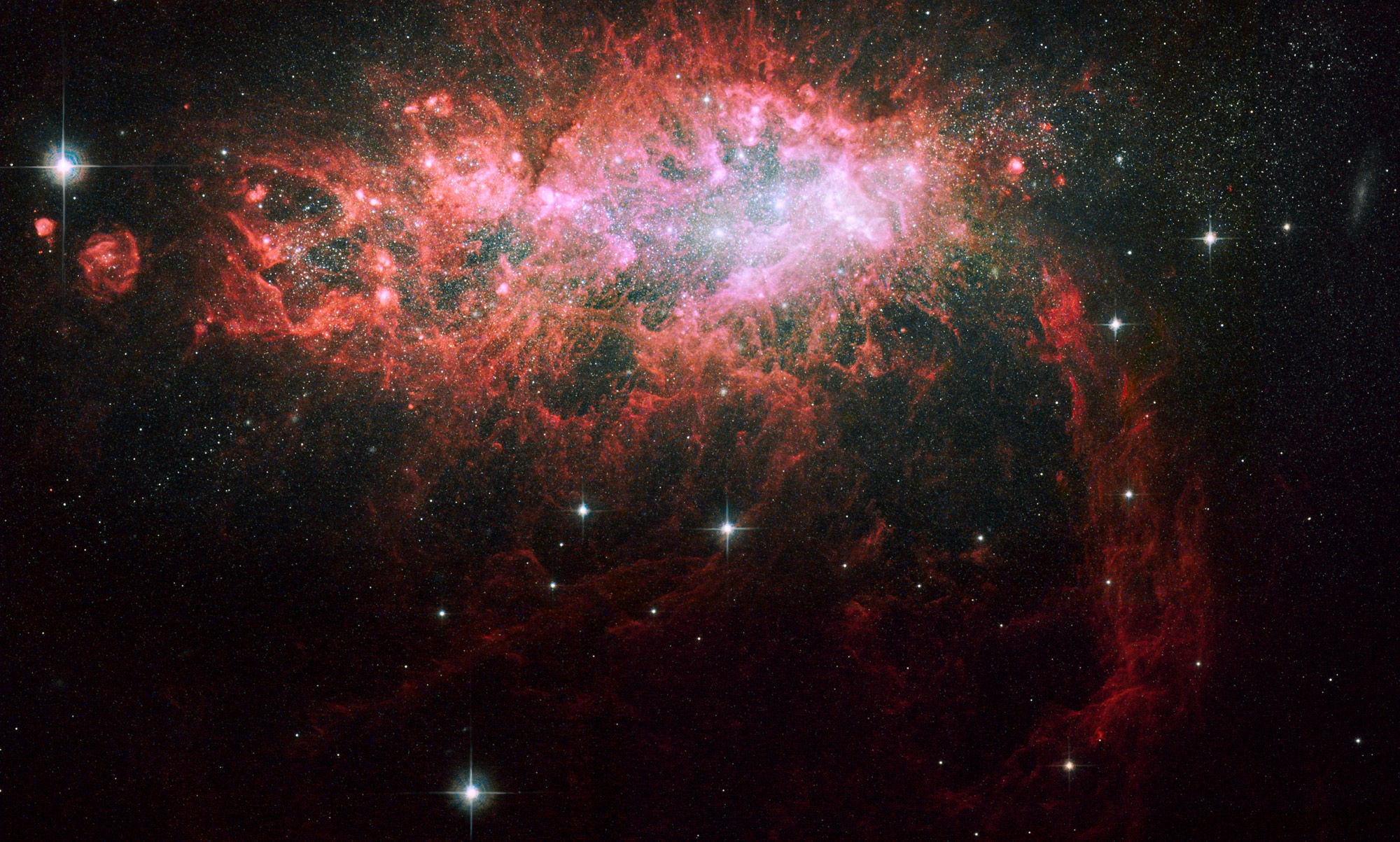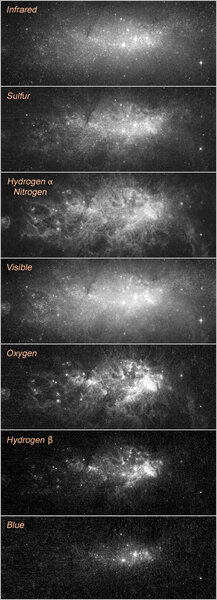Create a free profile to get unlimited access to exclusive videos, sweepstakes, and more!
NGC 1569: A nearby galaxy bursting with star birth

I had not heard of the nearby galaxy NGC 1569 until recently. That’s surprising; it’s relatively close to us, at only 11 million light years distant — for comparison the (rightly) famous Andromeda galaxy is 2.5 million light years away and is so big you have to hold up your entire hand to block it out.
While NGC 1569 is farther away, the reason it’s not well known is because it’s small. It’s a dwarf irregular galaxy, much smaller than Andromeda (and the Milky Way, for that matter). It’s about 11th magnitude, making it a hundred times fainter than the faintest star you can see with your naked eye. To see it as anything other than a faint smudge you’d need a decent-sized telescope.
Still, because it’s close, when you point Hubble at it, you get unmitigated HOLY-FRAK-ness. Behold:
HOLY FRAK!
Yeah, see? I wouldn’t lie to you.
It looks like it’s exploding, doesn’t it? All those streamers, lit up like fireworks, and the angry red coloring… it looks like a galaxy barely holding itself together.
In a sense that’s true. But it’s not the galaxy that’s exploding. It’s the stars in it. And it’s not just that they’re dying, it’s that they’re being born, too.
Despite its diminutive size, NGC 1569 is loaded with gas. Loaded. Stars are born from gas like that, and NGC 1569 is fecund indeed; its star formation rate is one hundred times the rate in the Milky Way! On average, our galaxy creates one Sun’s mass worth of stars per year (say, one star like the Sun, or ten with 1/10th its mass; and this is an average over millions of years, not like it’s cranking out exactly that many stars every year). That’s about standard for big galaxies. But NGC 1569 is popping out 100 solar masses of stars every year. That’s phenomenal. And it’s been doing this for a hundred million years. At least.
That’s a lot of stars.
Some small fraction of those stars are massive, 20 or more times the mass of the Sun. Stars like these are beasts, much hotter than the Sun, and far more luminous, blasting out tens or hundreds of thousands of times more energy. These stars affect the galaxy around them in two ways. One is that they don’t live long, and when they die they go with a BANG! They go supernova, blasting out vast amounts of energy and matter. While alive they also blow out very fast and powerful winds of subatomic particles like a super-solar wind, as well as radiate away fierce amounts of ultraviolet light.
Together, these have a profound effect on the gas around them. The UV light blasts the gas around the stars, disintegrating the knots of denser gas. This is called photoevaporation, and it’s what makes objects like the wondrous Pillar of Creation. It also helps push away gas; light exerts a small but sustained pressure, and that accelerates gas away from the stars.
The winds and the explosions have a more direct effect. They slam into the gas and push it away as well. What you wind up with is a huge cavity in the center of the galaxy where all these stars are being born, which you can see in the image. In the cavity are two bright blobs, too: Those are massive clusters of newborn stars (one of them is actually two clusters, so close together that even to Hubble they look like one), and they’re responsible for all that chaos.
Also, where the winds poke through lower density parts of the gas clouds they can blow out those long streamers. That’s literally gas being blown away from the galaxy!
This image is also a great example of how things look different in different wavelengths (or colors). As I’ve written about many times, low density gas excited by nearby stars glows in very specific wavelengths — think of it as a very narrow slice of color. Different gases emit at different wavelengths, allowing us to identify which is which. Not only that but we can compare how they glow at different wavelengths to measure properties of the gas like temperature and density. Astronomers use filters to isolate those colors, which we can then assemble into composite images, assigning colors to the filters.
Here’s how that plays out with NGC 1569:
In infrared (top) you’re seeing mostly stars. A filter that lets through light from sulfur shows where the gas is overall. The bulk of the gas is seen using a filter that lets through light from hydrogen (the most common element; the color is called H-alpha) and nitrogen (which emits light very close to the same red color as hydrogen). In visible you see both stars and gas, and oxygen shows where low-density gas is. Hydrogen-beta is still from hydrogen, but generally from just the warmer parts, and finally blue shows where the massive, hottest stars are.
The color image at the top of this post was created by adding together the light in H-beta (shown in blue), oxygen (cyan), visible light (green), and the hydrogen+nitrogen gas (red). Besides making a jaw-dropping image, putting them together actually helps see where the various components are and how abundant they are, too. The galaxy shines in red, because hydrogen really loves to glow red when excited, and there’s a lot of it.
But not an infinite amount. NGC 1569 will eventually run out gas, and star formation will cease. It’ll probably slow its formation rate before then; it’s possible the fact that so much gas is being blown out will choke its ability to form stars. Some of that gas may fall back into the galaxy, too, which can then be used to form stars at a slower rate. But either way, All Good Things… and when that happens, the massive stars will go first since they gobble up their fuel the fastest. Then the lower mass stars, then the lowest mass ones. It’ll take billions of years, maybe trillions, before the very lowest mass red dwarfs finally burn out, and NGC 1569 will go dark.
But that’s a long time from now, so we’ll have this spectacular view of it for a while yet.




























